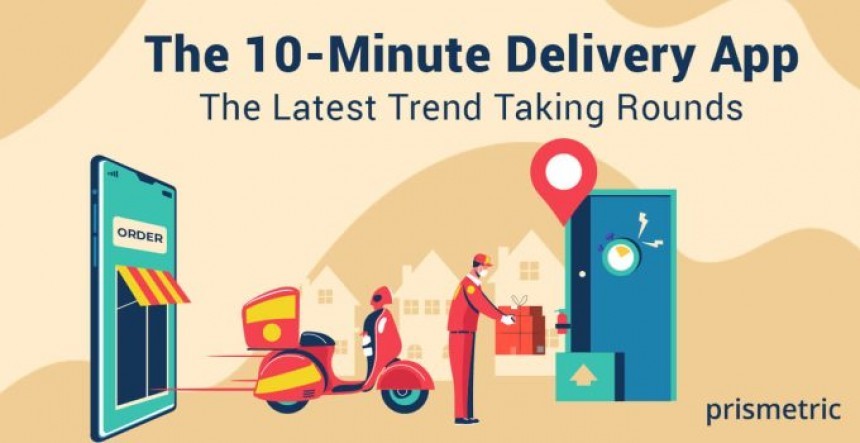
New Offer For Costumer Iphone 14 😍Only 9999😍
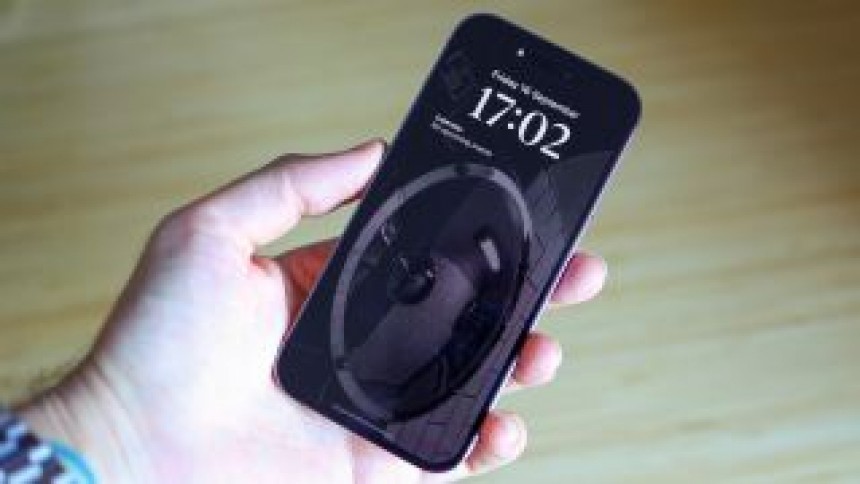
The iPhone 14 and iPhone 14 Pro are finally here. There are four iPhone 14 models to choose from, with one of them, the iPhone 14 Plus, being a newcomer to the lineup (this one doesn’t drop until October 7th). So we have iPhone 14, iPhone 14 Plus, iPhone 14 Pro and iPhone Pro Max (alas, the poor iPhone mini is no more).
What do the new phones offer in terms of an upgrade? Well, the iPhone 14 and iPhone 14 Plus are, arguably, an incremental evolution from the iPhone 13. There have been relatively minor improvements to battery life and camera, although improved low-light photography is very welcome. The iPhone Pro 14 is more of a exciting departure, though, introducing a couple of highly anticipated design changes – yes, the notch is gone! For more information, check out our hand-own iPhone 14 Pro review.
Read on for full details of the full range. You can order the iPhone 14 and iPhone 14 Pro right now, or if you want to compare them to the iPhone 13, see our iPhone 13 review. And if you already have your new phone and want to keep it protected, see our pick of the best iPhone 14 cases.
iPhone 14: Design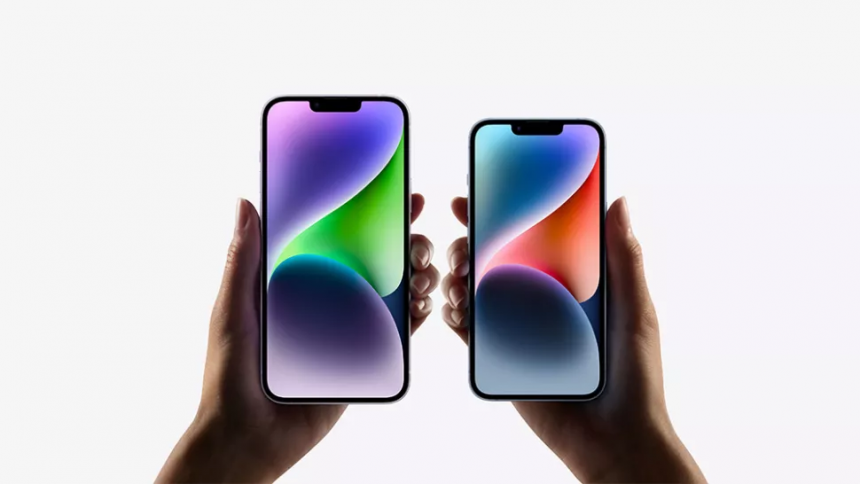
Apple is launching four models of the iPhone 14, although you could think of them as two models that each come in two sizes: the iPhone 14, iPhone 14 Plus, iPhone 14 Pro and iPhone 14 Pro Max. The newcomer in that lineup is the iPhone 14 Plus, which is effectively a larger version of the standard iPhone 14 in the same way that the iPhone 14 Pro Max is a larger version of the iPhone 14 Pro.
The iPhone mini is no more. As Apple says, you now have “big or bigger”. In a way, this simplifies the product range, giving us an entry-level pair and a high-end pair of phones each available in the same two sizes.
iPhone 14 and iPhone 14 Plus design
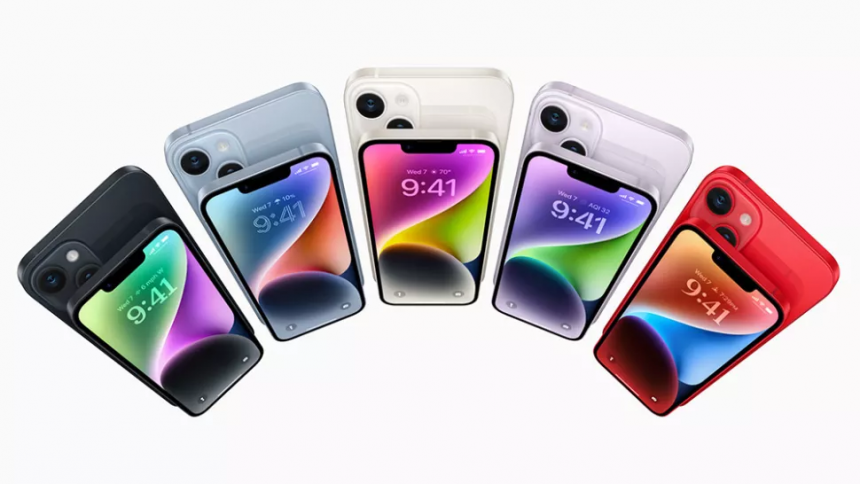
Not a lot has changed with the entry-level iPhone 14 in design terms. The standard iPhone 14 retains the 6.1in screen size of its predecessor while the new iPhone 14 has a larger 6.7in screen – the same size as the Pro Max. They look basically the same as the iPhone 13, with the same rear camera module with a diagonal layout and the same slim notch as the iPhone 13.
They both come in five colours: Midnight (black), Starlight (white), Blue, Purple, and PRODUCT(RED). Moonlight, Starlight and RED are regular iPhone colours. The other two are new, with the blue being a lighter shade than the one we have with the iPhone 13.
iPhone 14 Pro and iPhone 14 Pro Max design
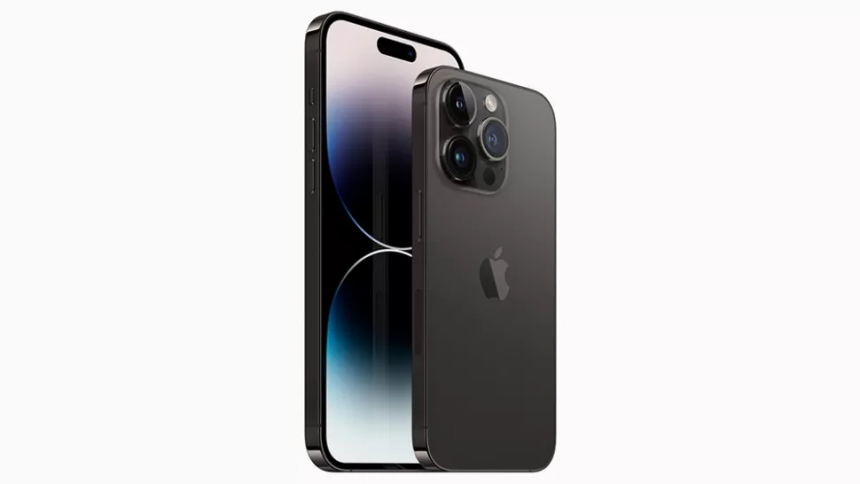
Then there are the Pros: the iPhone 14 Pro and Pro Max, again at 6.1in and 6.7in respectively, although the overall size varies from that of the iPhone 13 Pro by a fraction of an inch, with a notably larger camera bump. The two Pro models come in four colours, the black, silver and gold that we know and a new deep purple (much darker than the purple iPhone 14 and 14 Plus).
A lot of the rumours we heard about the Pros have turned out to be completely on the ball, and many people will be happy to see that the iPhone 14 Pro drops the much-maligned selfie-camera notch. That doesn’t mean it’s a completely flawless screen. Instead, there’s a pill-shaped cutout that Apple’s technically referring to as a ‘Dynamic Island’ (yes, really). This area can expand to show alerts and background activity.
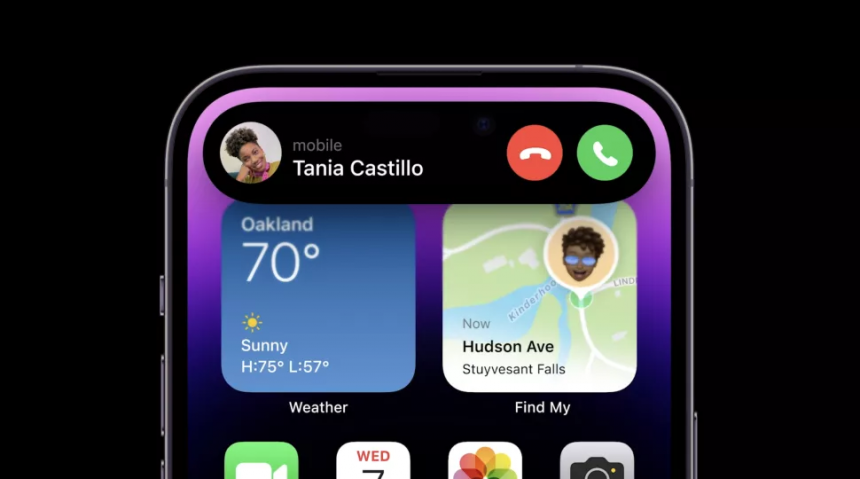
The exciting change with the screen is that the iPhone 14 Pro and Pro Max are getting always-on displays, something fans have been clamouring for. The bezels have been slimmed down too. Aside from that, the design looks largely the same as the iPhone 13 Pro and iPhone 13 Pro Max, with flat, stainless steel edges and a Ceramic Shield display. But then, we have no complaints about that, and we have to say the design looks as stunning as ever.
iPhone 14: display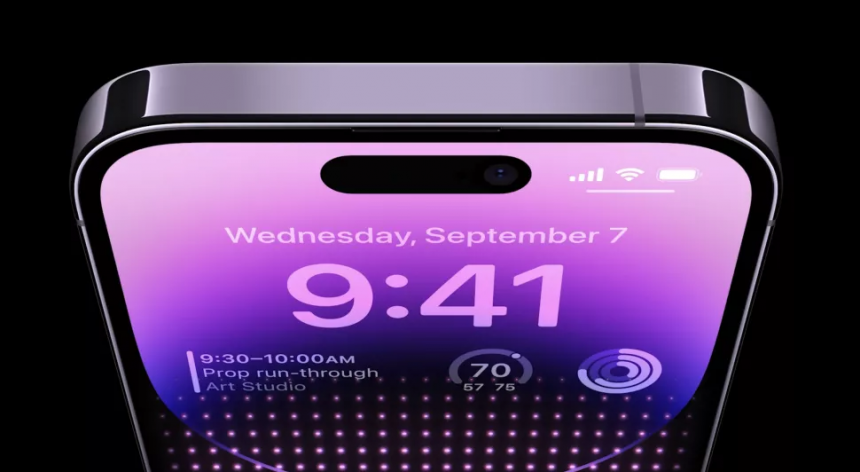
Both the iPhone 14 and the larger iPhone 14 Plus come with Apple’s Super Retina XDR OLED display with a peak HDR brightness of 1200 nits. They have Ceramic Shield on the front glass for improved durability. The iPhone 14 Pro and Pro Max can go up to 1,600 nits of brightness, and a peak 2,000 nits for outdoor use, beating the Samsung Galaxy S22 Ultra.
As we’ve mentioned, they boast an always-on display, which can show notifications and other information when the phone is locked. A new LTPO panel enables the refresh rate to scale down from 120Hz to 1Hz to save on battery life when the always-on display is enabled.
iPhone 14: Tech specsiPhone 14 and iPhone 14 Plus tech specs
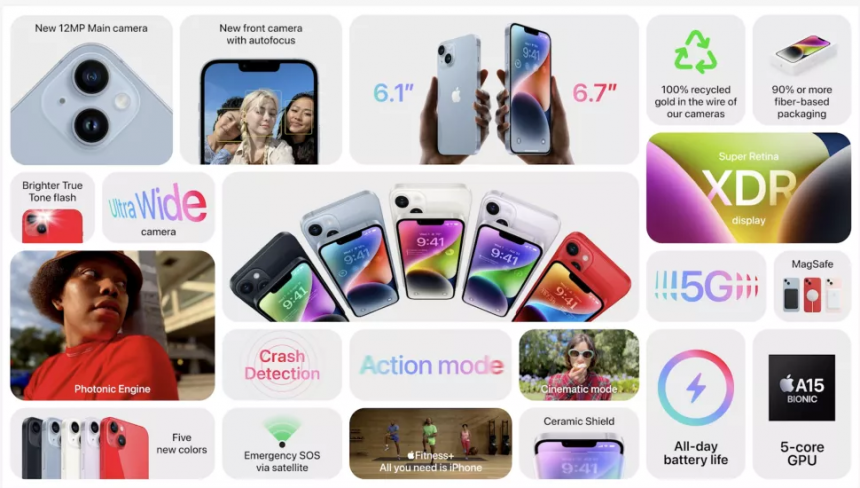
The iPhone 14 comes with the same A15 Bionic chip as the iPhone 13. Yep, that will sound a bit disappointing for anyone hoping for a performance upgrade, but it will add in a 5-core GPU, which Apple says offers a 20% graphics boost. Apple says it’s also improved the thermal performance so that you can push the iPhone 14 for longer, which should benefit those who want to use the phone for gaming.
Other than that, the main improvements are in the camera (see further below) and battery life. Apple’s claiming up to 20 hours of video playback on the iPhone 14 and up to 26 hours on the iPhone 14 Plus. That would be the best battery life on an iPhone yet (claimed battery life for the iPhone 13 was 19 hours).
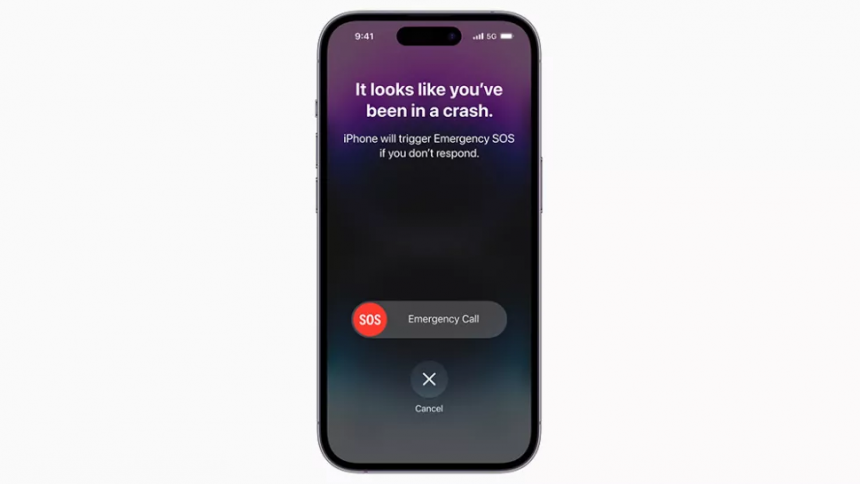
Other new features include the much-rumoured satellite connectivity. Emergency SOS with Satellite lets you call for emergency help when you don’t have a mobile signal – which could be a lifesaver for people in very rural areas. You get two free years of the service with the phone.
There’s also the addition of Crash Detection, which is designed to detect when it thinks you’ve been in a car crash and will automatically contact emergency services if you can’t respond. Also of note, there’s no SIM card tray, making the iPhone 14 eSIM only.
iPhone 14 Pro and iPhone 14 Pro Max tech specs
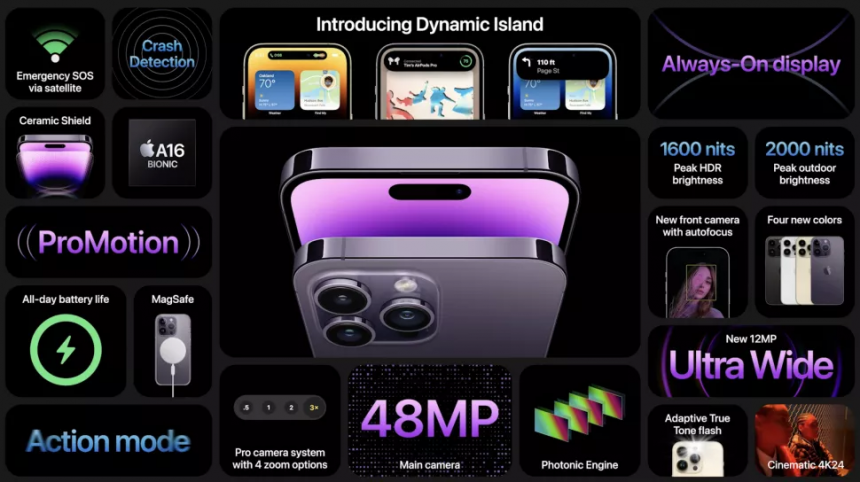
The Pro and Pro Max will come with a new A16 Bionic chip built on a 4-nanometer process, with a 6-core CPU. It has a 5-core GPU more with 50% more bandwidth and a display engine for that Dynamic Island. Apple says the Neural Engine can deal with 17 trillion operations per second to computational photography.
iPhone 14: Camera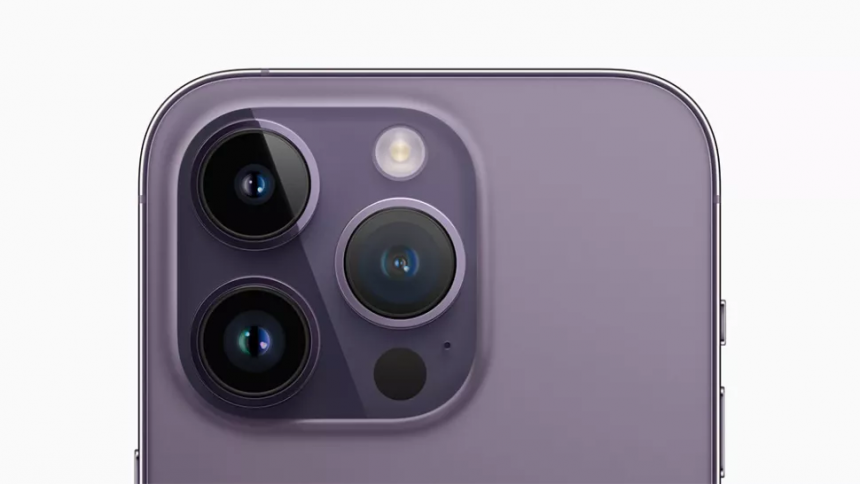
iPhone 14 and iPhone 14 Plus camera
The iPhone 14 and 14 Plus have a new 12MP main camera with a bigger sensor than their predecessor for a stated 49% low-light improvement thanks. The front camera is also 12MP and it adds autofocus for the first time along with a faster lens for better low-light performance.
Apple’s introduced some new tech wizardry across the range, which it’s calling a Photonic Engine. This should make low-light performance even better than before, with a claimed 2x improvement on the front camera and the ultra-wide and 2.5 x on the main camera. Video gets an upgrade too with an advanced stabilisation mode called Action mode, which can be toggled on for to make video smoother when you’re moving.
iPhone Pro and iPhone Pro Max camera
As we expected, we get a notable camera upgrade on the Pros too. All three cameras (main, telephoto, ultrawide) benefit from improved low-light photography, with a new 9-LED flash helping here too. There’s a new 48MP main camera which promises more detail and 2x improved low-light performance thanks to the new Photonic Engine.
ProRAW can also be used uncompressed at 48 megapixels, allowing more editing flexibility and video can now be shot at 4K up to 40 frames per second in Cinematic mode (there’s also the new Action mode the comes with the standard iPhone 14.

